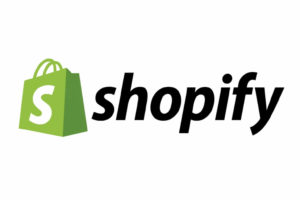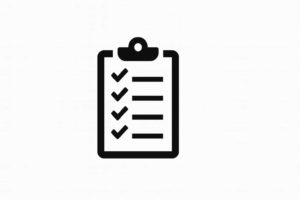In the chemical supply industry, billing by volume used to be good enough. You sold a barrel, invoiced the client, and moved on. What happened to that chemical after delivery, how much was used, how much was wasted, and how efficiently it was applied, wasn’t your concern. That was the buyer’s business.
But the world has changed. Efficiency is no longer optional. Waste is no longer acceptable. And the companies you serve, OEMs, food processors, automotive plants, clean rooms, and wastewater facilities, are under mounting pressure to optimize every drop, gram, or molecule of input. Which means you’re no longer just a supplier. You’re part of the process. And if your billing model doesn’t reflect that reality, you’re losing relevance by the drum.
Flat-rate billing based on projected usage, reorder cycles, or static SKUs locks both you and your customers into a guessing game. The plant manager overestimates, placing safety stock orders they may not need. Your sales team hedges pricing to cover variability, squeezing margins. The accounting team scrambles to reconcile inventory records with real consumption. And when overage happens, or worse, under-usage, no one knows how to reconcile what was billed against what was actually used.
This doesn’t just slow things down behind the scenes. It chips away at trust. It leaves customers in the dark. And it breaks the core promise of B2B: that what you pay should make sense for what you’re getting.
This is the promise of consumption-based billing, a model that aligns your revenue with real value delivered on the manufacturing floor.
It’s already happening in SaaS, utilities, and even healthcare. Now it’s coming to industrial supply chains, and chemical distributors who lead this transition won’t just win more contracts. They’ll embed themselves inside the operational rhythms of the customers they serve.
The good news? You don’t need to overhaul your entire system to start. With Shopify at the core, and a smart integration layer around metering and ERP, you can build a consumption-aware billing system that gives your buyers what they actually want: transparency, accuracy, and control.
We’ll walk you through exactly how that works, how Shopify supports this model, how chemical usage can be tracked and billed in real-time, and how to structure pricing that drives loyalty and efficiency.
But first, let’s kill the myth that Shopify can’t handle anything beyond fixed-price SKUs.
Why Shopify Can Power Usage-Based Billing
Most industrial suppliers still treat Shopify like it’s a B2C toy.
They see the polished storefronts, the drag-and-drop themes, the cart pages filled with candles and cookware, and assume it can’t possibly handle the logic, nuance, and backend complexity of industrial supply, especially not usage-based billing.
But the truth is, Shopify is not your limitation, your limitation is your architecture.
Shopify’s core strength isn’t just the storefront. It’s the infrastructure around it, the APIs, the flexible checkout engine, the draft order system, the ability to trigger workflows off of just about any data event. When you treat Shopify as the foundation, not the finish line, it becomes the control tower for a fully custom consumption model.
Let’s break it down.
Imagine a chemical supplier delivering solvents to four different automotive plants. Each plant consumes a different volume daily, driven by production line speed, number of shifts, and climate conditions. You want to bill each facility based on what they actually used, not what they said they might.
With Shopify at the core, that scenario is entirely possible.
First, you integrate usage data from sensors, tanks, or manual input sheets through a custom app or ERP middleware. That data doesn’t go into Shopify as “orders” yet, it goes in as metering events. When usage hits a certain threshold, Shopify’s draft order logic kicks in. The system creates a draft invoice, pre-fills line items based on the actual volume consumed, and sends the invoice for approval or auto-payment. You’ve just replaced manual tracking and guessing with precision billing, all while keeping your ecommerce front-end fully intact.
Even without IoT or sensor data, you can set up manual reporting workflows. Let customers log usage daily via a secure portal. Trigger draft orders weekly or monthly. Let supervisors see their real-time spending. Let purchasing departments forecast more accurately. You’re not selling chemicals anymore, you’re selling clarity, control, and operational harmony.
And Shopify doesn’t have to do it all alone. Its extensible framework means you can plug in any ERP, CRM, or logistics system. You can customize logic around how metering data gets priced, per unit, per tier, and per contract. You can store and display usage dashboards inside the customer portal. And you can control how often those charges flow into your billing system.
The point isn’t that Shopify magically does it all out of the box. The point is that Shopify gives you the canvas and control points to build a system that does.
Most industrial brands think they need to “graduate” from Shopify to something bigger when billing gets complex. In reality, what they need is to treat Shopify like a backend platform, not just a pretty storefront.
What Usage-Based Billing Looks Like in the Real World
Picture this: You supply industrial degreasers, etching solutions, and rinse chemicals to a manufacturer with five production lines across three facilities. Each line operates at a different cadence. One line runs continuously, two are seasonal, and the rest fluctuate based on client demand.
Historically, you’ve billed each facility the same way, monthly delivery of fixed volumes, static pricing, standard invoicing terms. But behind the scenes, usage patterns are anything but uniform. One facility routinely runs dry two weeks before the next scheduled shipment. Another stockpile of drums in a back corner, slowly corroding under fluorescent light. None of them are paying based on what they actually use.
The consequences compound quietly.
On your side, you’re fronting logistics and production costs for a product that may sit idle for months. On theirs, chemical waste climbs, reorder delays disrupt production, and nobody can say with confidence how much is being used, where, or why. You’re supplying chemicals. But you’re not providing intelligence. And in today’s manufacturing environment, that gap matters.
Now imagine a different approach.
Each facility is outfitted with simple consumption reporting, either a Bluetooth-enabled meter attached to dispensing equipment or a secure login where line supervisors input usage daily. That data is fed into a private dashboard built on Shopify, customized to reflect facility-level consumption in near real-time.
As usage accumulates, thresholds are reached. A facility hits 800 liters of degreaser used this month? Shopify triggers a draft order automatically. The price? Pulled from a tiered usage pricing model set during implementation: $1.10 per liter up to 1,000, $0.95 beyond. Volume-based incentives are baked into the system, not tacked on during end-of-quarter phone calls.
Purchasing doesn’t need to email. Ops doesn’t need to guess. The facility sees a transparent log of chemicals consumed, volume billed, reorder timing, and total cost, on a timeline that reflects their actual operations, not yours.
And what happens when one facility’s usage spikes outside of norms?
You know before they do. Because you’re not just fulfilling chemicals anymore, you’re monitoring operational trends. A sudden increase in solvent draw could signal a process breakdown, a leak, or an uptick in output. You’re now a source of insight, not just inventory.
From their perspective, you’ve moved from vendor to partner. You’re giving them what no one else is: live visibility into one of their most critical inputs, wrapped inside a pricing model that adapts to reality, not rigid terms written six quarters ago.
From your perspective, you’ve stabilized cash flow, reduced returns, deepened operational stickiness, and differentiated your service in a commodity-heavy space.
This is consumption-based commerce. It’s not just a shift in billing. It’s a shift in role, posture, and relationship.
And Shopify can deliver this, not as a bolt-on gimmick, but as a tightly integrated system that feeds off the very heartbeat of the plant.
The Architecture — How to Build a Consumption-Aware Shopify Stack
Consumption-based billing isn’t a feature you toggle on. It’s a system you design, deliberately, intelligently, and in alignment with the operational heartbeat of your customer. And with Shopify at the core, building this system doesn’t require a full platform overhaul or ERP migration. It requires the right architecture, modular, connected, and purpose-built for visibility and control.
It starts where the usage begins: the production floor.
In the most advanced setups, that means sensors or flow meters installed at the point of chemical dispensing. These devices capture real-time consumption: how many liters of anti-corrosive solution were pulled from the bulk tank, how much solvent was used during the third shift, and how often a rinse cycle activated. That data isn’t just engineering telemetry, it’s billing gold. And the moment you capture it, you’ve broken free of blind shipping and entered the world of usage intelligence.
The sensor data gets routed to a lightweight data gateway, often a PLC, SCADA system, or IIoT integration layer, which syncs with middleware that formats usage data into a Shopify-readable structure. This doesn’t mean pushing every data point into the store, it means mapping usage events to customer IDs, SKU references, pricing rules, and billing thresholds. It’s the difference between a data dump and a revenue stream.
Once usage data reaches Shopify, the system triggers actions based on pre-set logic.
If a facility consumes 1,000 liters of a chemical this month, the platform automatically generates a draft order with the correct line item, volume, and tiered price. That order can be auto-approved and billed immediately, or routed to a purchasing contact for review. If consumption surpasses a defined safety threshold, a reorder recommendation can be sent, pre-filled, personalized, and compliant with any contract minimums.
The customer’s portal becomes their operations dashboard. They log in and see exactly what they’ve consumed, when and where it was used, and how it aligns with contract pricing. They don’t need to chase your team for status updates or wait for invoice reconciliation. Everything’s there, clean, accurate, and up to date. That transparency becomes a competitive advantage that’s hard to unseat.
On the backend, Shopify’s extensibility allows you to integrate deeply with your ERP, CRM, and fulfillment systems. Inventory updates automatically as usage data comes in. Route-based delivery schedules can be optimized using real-time depletion. Safety documents like SDS, compliance flags, or labeling requirements can be embedded in the customer workflow.
And all of this is managed through a headless or semi-headless approach, meaning you’re not locked into the Shopify storefront model. You can build a fully custom UX on top of the Shopify engine, tailored for industrial buyers who care less about visual polish and more about operational clarity.
You don’t need to build this all at once.
Start with one SKU. One facility. One usage input. Structure the data. Build the billing logic. Train your sales and operations team around the workflow. Then scale it.
Because the architecture is modular, each new SKU or facility becomes an extension of the model, not a new build. You’re not reinventing billing every time. You’re deploying a system that adapts as you grow.
And more importantly, as your customer’s needs evolve, this architecture ensures you’re already there, tracking what matters, billing what’s real, and delivering not just product, but intelligence.
Billing Models That Actually Work for Industrial Chemicals
The goal of consumption-based billing isn’t just fairness. It’s alignment. Alignment between cost and value. Between usage and replenishment. Between your margin and their efficiency. But without the right pricing logic behind it, even the most advanced metering system will collapse into confusion or conflict
That’s why building the right billing model matters as much as the technical implementation.
Let’s be clear, there’s no one-size-fits-all formula here. What works for a supplier of bulk cleaning acids to food processors may not work for a manufacturer of specialty resins or precision etching chemicals. The key is to build models that reflect how the customer uses your product, not how you want to sell it.
In many cases, the foundation is volume-based pricing. You charge per liter, per gallon, per pound, based on actual metered usage, not scheduled delivery. But that’s just the beginning. Once you’re billing based on real usage, you unlock a range of pricing levers that deepen stickiness and reward efficiency.
Tiered usage pricing is one. The more a customer uses, the lower the per-unit cost. This rewards high-volume facilities while protecting your margins on smaller accounts. But it also gives the buyer incentive to consolidate their supply contracts, because every additional liter consumed through your system moves them closer to a better rate. You’re not just a vendor now. You’re their efficiency partner.
Threshold-based triggers are another. Maybe a customer has a monthly minimum commitment of 1,000 gallons. If they don’t hit it, their rate floats up next month. If they exceed it, they lock in a better rate for the next quarter. These models create predictability for your cash flow while encouraging steady consumption patterns from the buyer.
You can also build in waste detection pricing. If usage data reveals erratic draw patterns or volume spikes unrelated to production increases, that’s a red flag. Instead of penalizing the customer, you flag the issue and offer a service: on-site audit, process analysis, or dispensing calibration. That’s not just upsell, it’s value creation. You’re helping them optimize their process while reinforcing your role as the chemical partner who actually understands operations.
What about blended pricing models? These combine fixed base fees (to cover infrastructure or support) with usage-based variable charges. This hybrid approach works well when onboarding customers into a consumption-based program for the first time. It eases them out of fixed pricing without throwing them into full variability, and gives you margin coverage as systems stabilize.
All of these models can live inside Shopify Plus. With the right product architecture and tagging strategy, you can assign different pricing logic to different customer groups, SKUs, or facilities. Tiered pricing? Handled through Shopify Plus’s customer tags or via a custom pricing app. Minimum thresholds? Monitored through middleware logic and enforced via draft order conditions. Blended fees? Structured as bundled SKUs or subscription add-ons layered onto metered usage.
The result isn’t just billing accuracy, it’s behavioral design. You’re not just charging for chemicals. You’re building a system that shapes consumption, encourages efficiency, and turns data into a commercial advantage for both sides.
More importantly, you’re giving buyers something they rarely get in B2B: transparency, predictability, and control.
Implementation Roadmap — How to Roll Out a Consumption-Based Billing Model in Phases
You don’t overhaul your entire billing infrastructure overnight. Not in chemicals. Not in manufacturing. Not when you’re dealing with hazardous materials, compliance, procurement teams, and legacy contracts that still arrive by fax.
But you can evolve, systematically and when you do it right, each step doesn’t just get you closer to a consumption-based model. It strengthens trust, simplifies operations, and adds margin where you didn’t think margin could exist.
Phase 1: Prove the Model Before You Sell It
It begins with a single customer, a single product, and a single facility. Not your biggest account. Not your most complex SKU. Choose a partner who’s open to innovation, someone who already sees the waste and inefficiency in the current system and is eager to experiment.
You start by tracking consumption manually.
Forget sensors. In the first phase, the production supervisor enters daily or weekly chemical usage into a shared dashboard. That data feeds into a simple Shopify backend: one product, one pricing model, one customer. No automation yet, just clean, reliable inputs.
This “shadow billing” phase runs alongside the customer’s normal invoicing. You’re not replacing their accounting system; you’re validating the logic. You compare actual usage to contracted volumes. You model out what pricing would look like under a consumption structure. You identify where they’d save, or where they’d need to shift behavior.
Then, you show them the report.
This is a trust tool. It says, “Here’s what you actually used. Here’s what we delivered. Here’s what you paid, and here’s how a smarter system could work for both of us.”
When the customer sees the waste, the overordering, the volatility, they lean in.
Phase Two : Partial Automation
You install metering, either hardware-based (flow sensors, tank-level readers) or human-assisted (barcode scans, mobile inputs at point-of-use). Usage data now enters your Shopify environment in near real-time. You set logic rules: trigger a draft order at 500 liters, apply Tier 2 pricing at 1,000, email a reorder alert if draw rate exceeds baseline by 20%.
You don’t automate fulfillment yet. You’re building muscle memory, both for your ops team and your customer. The goal is predictability. Transparency. Shared control.
By now, your Shopify catalog has evolved. Each chemical SKU includes custom metafields: usage thresholds, pricing tiers, facility mappings, safety docs. You’ve stopped thinking of Shopify as an “ecommerce platform.” It’s now a consumption engine-wrapped in a purchasing interface.
Phase Three: Full Rollout.
You map usage-to-order flows directly to your fulfillment system. When a facility draws 1,200 liters of a rinse chemical, the Shopify engine creates a draft order, applies negotiated pricing, syncs with your ERP for fulfillment routing, and pushes confirmation to the customer’s portal. Everyone sees the same thing, no email chains, no phone calls, no second-guessing invoices.
By now, your procurement contact trusts the system more than their spreadsheet. Their plant managers are trained. Your reps are no longer chasing reorders. You’ve replaced a reactive, high-friction process with a proactive, margin-positive loop.
You then repeat the cycle, product by product, facility by facility. Over time, you migrate even the most complex contracts to dynamic usage logic. Your pricing strategy evolves. Your support costs drop. Your forecasting gets sharper. You begin to see what your customers see: not a supplier, but a systems partner.
This is how you implement a consumption-based billing model in Shopify, without disruption, without distrust, and without breaking the business.
Locking in the Advantage — How to Defend and Evolve the Model
By the time your consumption-based billing system is fully deployed, something shifts, quietly but permanently. You stop competing on price, and start competing on precision. Your relationship with the customer moves out of the transactional zone and into something operational, embedded, and far more defensible.
But like any edge, if you don’t protect it, it dulls.
So the real question becomes: how do you safeguard the system you just built? And how do you grow it without unraveling the clarity and trust that made it work in the first place?
It starts with owning the customer interface.
In traditional chemical supply, the customer experience is fragmented, somewhere between a rep’s voicemail, an email PDF, and a NetSuite login that hasn’t worked since 2018. But now, your Shopify system has become the heartbeat of their ordering, billing, and usage insights. That interface, the portal, the dashboard, the reorder engine, isn’t just UX. It’s your moat.
You don’t let IT or procurement dictate its limits. You evolve it continuously: new usage alerts, more detailed audit logs, predictive delivery calendars. You give the buyer’s team exactly what they need before they know they need it.
The moment a competitor tries to offer “better pricing,” your contact pushes back. Because pricing isn’t the point anymore. Visibility is. Trust is. And no one else has the data structures or behavioral integration you’ve built into their day-to-day.
Next, you protect the logic behind the scenes.
Your billing engine isn’t just a script. It’s a strategy. That means locking in tiered incentives that deepen the relationship the more they use. It means mapping pricing curves not just to volume, but to timing, location, and risk mitigation. You’re not just charging for chemicals, you’re offering consistency, efficiency, and safety, in a form no one else can match.
And then there’s your sales team.
They no longer sell SKUs. They sell systems. When they walk into a new prospect meeting, they don’t lead with a price sheet. They open with a story: “Here’s how we helped a manufacturer cut 15% of solvent waste while reducing rush orders by 80%, and we did it through consumption tracking, not discounts.”
That story lands harder than any quote. Because it reframes the conversation from commodity to capability. From vendor to partner.
But perhaps the most powerful way to evolve this system is to turn the data outward.
You now have usage telemetry across multiple customers, products, and industries. You can identify usage anomalies before the customer does. You can offer benchmarking: “Most plants your size use 12% less of this compound. Let’s explore why.” You’re not just responding to demand. You’re shaping it. Coaching it. And in doing so, you entrench your brand where it matters most, inside their process, not just their POs.
What you’ve built is not easy to copy.
It’s not a plugin. It’s not a feature anyone else can spin up in 30 days. Because it’s not just code. It’s behavioral. It’s relational. It’s the trust infrastructure of the modern industrial supplier.
And when it’s in place, the pricing conversation fades. The loyalty deepens. And the growth compounds.
The Consumption-Based Billing Toolkit
1.Usage-Based Billing Feasibility Scorecard
Use this scorecard to determine if your current infrastructure can support real-time or near-real-time consumption billing.
| Requirement | Current Status | Notes |
| SKU-level pricing flexibility | ☐ Yes ☐ No | |
| Tiered pricing by usage band | ☐ Yes ☐ No | |
| Facility-level customer segmentation | ☐ Yes ☐ No | |
| Manual or sensor-based consumption tracking at facility | ☐ Yes ☐ No | |
| Integration with ERP or middleware | ☐ Yes ☐ No | |
| Customer portal with line-item billing visibility | ☐ Yes ☐ No | |
| Shopify Plus + metafields + draft order workflows enabled | ☐ Yes ☐ No | |
| Billing team open to variable billing cycles | ☐ Yes ☐ No |
Scoring:
6–8 Yes: You’re ready to implement at scale
3–5 Yes: Start with a single-facility pilot
0–2 Yes: Begin with usage visibility before automating billing
2. Pricing Model Blueprint Matrix
Compare pricing strategies for usage-based billing and match them to customer types.
| Model Type | Use Case | Benefits | Risks |
| Per-Liter Flat Rate | Low-variance SKUs, consistent demand | Easy to track and explain | May misalign with value |
| Tiered Pricing Bands | Multi-facility clients, consolidation incentives | Drives volume, rewards efficiency | May be gamed if not capped |
| Threshold Incentives | Plants with erratic consumption or minimum commitments | Smooths order frequency, increases predictability | Can confuse buyers if not visible |
| Blended Billing (Fixed + Usage) | Onboarding phase or high-support SKUs | Covers support cost, rewards usage | Complex to communicate |
| Exception Flag Pricing | SKUs where misuse/waste detection adds service value | Triggers site visits, drives upsells | Requires accurate anomaly detection |
3. Shopify Architecture Map for Usage Billing
| Layer | Tool / System | Role |
| Frontend | Shopify PWA / Liquid UX | Customer portal, usage display, billing interface |
| Middleware | Custom App or Node.js | Captures usage events, maps to SKUs, triggers drafts |
| Data Source | Sensors / Manual Logs | Captures true consumption by line/facility |
| Pricing Logic | Shopify metafields + tags + pricing apps | Applies tier/threshold logic |
| Draft Orders | Shopify draft order API | Creates usage-based invoices automatically |
| Approvals | Shopify Flow or email | Sends for confirmation or auto-approves |
| ERP Sync | Netsuite, SAP, or Odoo | Reconciles inventory and AR |
Pro tip: Build this as a modular stack—start with manual reporting into Shopify draft orders, then layer in automation.
4. Operational Rollout Timeline
| Phase | Actions | Timeframe |
| Phase 1: Shadow Billing | One SKU, one facility. Manually record usage. Generate parallel invoices. | 2–4 weeks |
| Phase 2: Partial Automation | Meter install or input UI. Tiered pricing rules configured. Draft orders automated. | 4–6 weeks |
| Phase 3: Full Integration | Real-time ERP sync, fulfillment automation, facility-wide rollout. | 8–12 weeks |
Each phase should include:
- Internal training for sales, ops, and billing
- Buyer walkthroughs of new interface
- Usage variance audit to calibrate pricing
5. Data & UX Checklist for Buyer Visibility
Your buyer’s trust depends on clarity. Ensure these touchpoints are part of your customer portal:
| UX Element | Description | Status |
| Live usage chart | Liters used per SKU, per week/month | ☐ |
| Billing forecast | Estimated invoice value based on current draw rate | ☐ |
| Threshold triggers | Notifications for nearing volume discount bands | ☐ |
| Audit log | Facility, operator, draw time, SKU | ☐ |
| Contract compliance tracker | Tracks against monthly minimums or rebates | ☐ |
| Downloadable invoices + SDS documents | Centralized access for procurement & safety compliance | ☐ |
How to Start — Claim Your Consumption-Based Billing Diagnostic
You don’t have to start from scratch. You don’t need to tear down your current systems or hire a full engineering team to reinvent the wheel. What you need is a diagnostic, a clear, technical map of what’s working, what’s not, and where your billing architecture can evolve to support consumption-based models.
Most chemical suppliers already have 80% of what they need, metering data from the field, SKU-level cost structures, and customer segmentation by facility or region. What’s missing is the connective tissue. The layer that links real-time usage with real-time billing logic inside your ecommerce platform.
That’s what our diagnostic delivers.
We evaluate your current Shopify or ERP setup. We map your top chemical SKUs to the behaviors they’re supposed to support, by product, by site, by contract. We analyze how consumption data is flowing into your sales and billing processes. And we design a dual-layer solution: one part customer-facing (the Shopify UX), one part logic layer (the metering-to-pricing engine).
We show you where blended billing models will increase margins without disrupting your customers. Where tiered pricing can reduce churn without sacrificing profitability. Where your current catalog structure is getting in the way of automation. And most importantly, we show you what it would actually take to shift to a consumption-first model across your most critical product lines.
Because once you see what’s possible, and what it frees your team to do, there’s no going back to monthly guesswork and retroactive reconciliation.
Consumption-based billing isn’t just for the SaaS world anymore. It’s here, it’s real, and it’s ready for chemicals. And the suppliers who move first don’t just win efficiency. They win trust, loyalty, and operational integration that no competitor can match with a better price.
So if you’re ready to make billing a growth lever, not just a back-office function, contact us today.
We’ll help you map the entire system, without interrupting your current process, without confusing your buyers, and without putting your team in over their heads.
Because this isn’t about billing.
It’s about building infrastructure that scales with every liter drawn, every site served, and every PO fulfilled.
Let’s make your next invoice the start of something smarter.










